| DESTINATION INFORMATION | ||
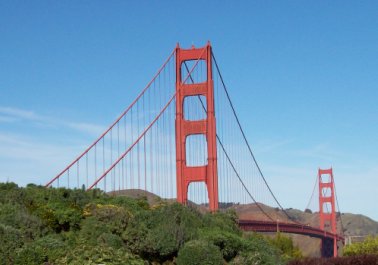 Perched atop hills and filled-in marshland at the entrance to one of the Pacific’s largest natural harbors, San Francisco has had an outsized influence on the history of California and the United States. Originally a Spanish (later Mexican) mission and pueblo, it was conquered by the United States in 1846. The Gold Rush of 1848 made San Francisco a cosmopolitan metropolis with a frontier edge. The great 1906 earthquake and fire destroyed much of the city but barely slowed its momentum; San Francisco barreled through the 20th century as a center of wealth, military power, progressive culture and high technology.
Perched atop hills and filled-in marshland at the entrance to one of the Pacific’s largest natural harbors, San Francisco has had an outsized influence on the history of California and the United States. Originally a Spanish (later Mexican) mission and pueblo, it was conquered by the United States in 1846. The Gold Rush of 1848 made San Francisco a cosmopolitan metropolis with a frontier edge. The great 1906 earthquake and fire destroyed much of the city but barely slowed its momentum; San Francisco barreled through the 20th century as a center of wealth, military power, progressive culture and high technology.
San Francisco has maintained its reputation as a center of cultural bohemianism and is renowned for its radical thinking and activism. In earlier years it drew writers from Mark Twain to Jack London and became a center for the 1950s beat poets and for the Haight-Ashbury hippie counterculture that peaked with the 1967 “Summer of Love.” Long a hotbed of environmental, labor and women’s rights activism, the city gained a reputation for welcoming gays and lesbians. San Francisco spawned the hippie movement, while nearby Berkeley in the East Bay was the birthplace of the Free Speech and locavore movements. To many Americans, San Francisco is the nation’s food and wine capital. San Francisco boasts more restaurants per capita than any other city in the U.S. Berkeley chef Alice Waters of Chez Panisse fame started the farm-to-table obsession here in the 1970s. The city is awash with excellent restaurants, while its proximity to the Sonoma and Napa Valleys means that, in less than two hours, travelers can enjoy tastings at some of the best wine estates in the country. San Francisco sits at the tip of the San Francisco Peninsula, with lots of walking and cycling trails all along the waterfront from the Embarcadero to Golden Gate Park. A short hop across the Golden Gate Bridge are Sausalito, Point Reyes National Seashore and Muir Woods. |
||
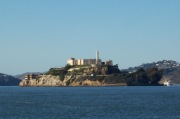 ALCATRAZ ISLAND ALCATRAZ ISLAND Alcatraz was the site of the first lighthouse in the Western United States and later became a federal penitentiary housing famous convicts such as Al Capone and George "Machine Gun" Kelly. This once infamous prison island is part of the 80,000-acre Golden Gate National Recreation Area. A visit to the island includes a tour of the cell house where visitors can see where the prisoners lived. |
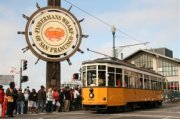 FISHERMAN'S WHARF FISHERMAN'S WHARF Fisherman's Wharf is a neighborhood and popular tourist attraction encompassing the northern waterfront area of San Francisco from Ghirardelli Square (Van Ness Ave.) to Pier 35 ( Kearny Street). The historic district is home to PIER 39, Ghirardelli Square, the National Maritime Museum, Historic Hyde Street Pier, breathtaking views and so much more. |
|
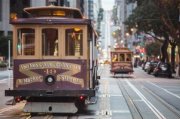 CABLE CARS CABLE CARS The San Francisco cable car system is the world's last manually operated cable car system and a San Francisco icon. Of the twenty-three lines established between 1873 and 1890, only three remain. The cable cars are listed on the National Register of Historic Places and are one of only 2 mobile National Landmarks in the U.S. |
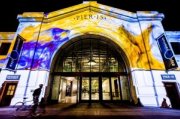 EXPLORATORIUM EXPLORATORIUMA museum that allows visitors to explore the world through science, art, and human perception. Characterized as "a mad scientist's penny arcade, a scientific funhouse, and an experimental laboratory all rolled into one". It is cited as the prototype for participatory museums around the world. |
|
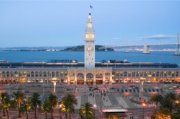 FERRY BUILDING MARKETPLACE FERRY BUILDING MARKETPLACE
The Ferry Building and its dramatic clock tower has been an icon of the San Francisco waterfront for more than a 100 years.
Opening in 1898, the Ferry Building became the transportation focal point for anyone arriving by train. From the Gold Rush until the 1930s, arrival by ferryboat became the only way travelers and commuters – except those coming from the Peninsula – could reach the city. At its peak, as many as 50,000 people a day commuted by ferry.
In March 2003, the landmark San Francisco Ferry Building reopened to the public after an extensive four-year restoration. The Ferry Building Marketplace -- a world class public food market -- is organized along a dramatic indoor street, the Nave. |
 CHINATOWN CHINATOWNChinatown centered on Grant Avenue and Stockton Street is the oldest Chinatown in North America and the largest Chinese enclave outside Asia. Since its establishment in 1848, it has been highly important and influential in the history and culture of ethnic Chinese immigrants in North America. Chinatown is an enclave that continues to retain its own customs, languages, places of worship, social clubs, and identity. While recent immigrants and the elderly choose to live here because of the availability of affordable housing and their familiarity with the culture, it is also a major tourist attraction, drawing more visitors annually than the Golden Gate Bridge. |
|
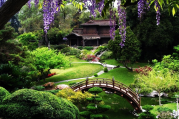 GOLDEN GATE PARK GOLDEN GATE PARK Experience miles of green lawns, bridle paths, lakes, flowers amid countless trees and 7,000 kinds of plants right in the heart of San Francisco. Here you’ll enjoy a treasure of varied attractions from top museums to exquisite gardens to extraordinary events. Several noted cultural and natural attractions are found in the park including the de Young Museum,California Academy of Sciences, San Francisco Botanical Gardens and the Japanese Tea Room. You can even see the Buffalo roaming in the Buffalo Paddock. |
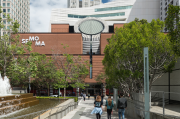 SAN FRANCISCO MUSEUM OF MODERN ART SAN FRANCISCO MUSEUM OF MODERN ART SFMOMA holds an internationally recognized collection of modern and contemporary art, and was the first museum on the West Coast devoted solely to 20th-century art. The museum’s current collection includes over 33,000 works of painting, sculpture, photography, architecture, design, and media arts. They are displayed in 170,000 square feet (16,000 m2) of exhibition space, making the museum one of the largest in the United States overall, and one of the largest in the world for modern and contemporary art. |
|
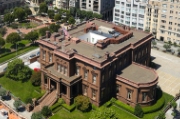 NOB HILL NOB HILL Once home to the mansions of the Big Four railroad barons, Nob Hill retains a sense of wealth and privilege. Some of the city’s swankiest hotels are here, as are the ornate, Gothic-style Grace Cathedral and charming Huntington Park. The Cable Car Museum exhibits antique cars alongside live machinery. |
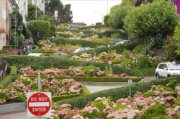 LOMBARD STREET LOMBARD STREET
Lombard Street in San Francisco is one of America’s crookedest streets and found on many tours. The steep, hilly street was created with sharp curves to switchback down the one-way hill past beautiful Victorian mansions. This Russian Hill neighborhood possesses stately mansions even with the endless array of tourists pouring down the street every day. |
|
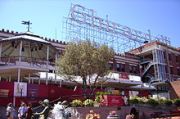 GHIRARDELLI SQUARE GHIRARDELLI SQUAREChile is an agricultural paradise whose bounty of fruits and vegetables supplies the world’s marketplaces and whose wine grace tables on every continent. A Mediterranean climate and increasingly organic, sustainable farming practices combine to create high-quality wines. Within a three-hour drive of the country’s capital there are seven principal wine regions that grow Carménère, Pinot Noir, Cabernet Sauvignon, and Sauvignon Blanc grapes, among other less-known varietals like Carignan, País, and Petit Verdot. |
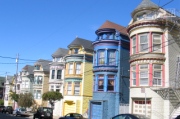 HAIGHT-ASHBURY HAIGHT-ASHBURYBirthplace of the 1960s counterculture movement, Haight-Ashbury draws a lively, diverse crowd looking to soak up the historic hippie vibe. Upper Haight Street is a hodgepodge of vintage clothing boutiques, record shops, bookstores, dive bars and casual, eclectic restaurants. Bordering Golden Gate Park, the neighborhood features many colorful, well-preserved Victorian homes, including the storied Grateful Dead House. |
|
 |
 |

